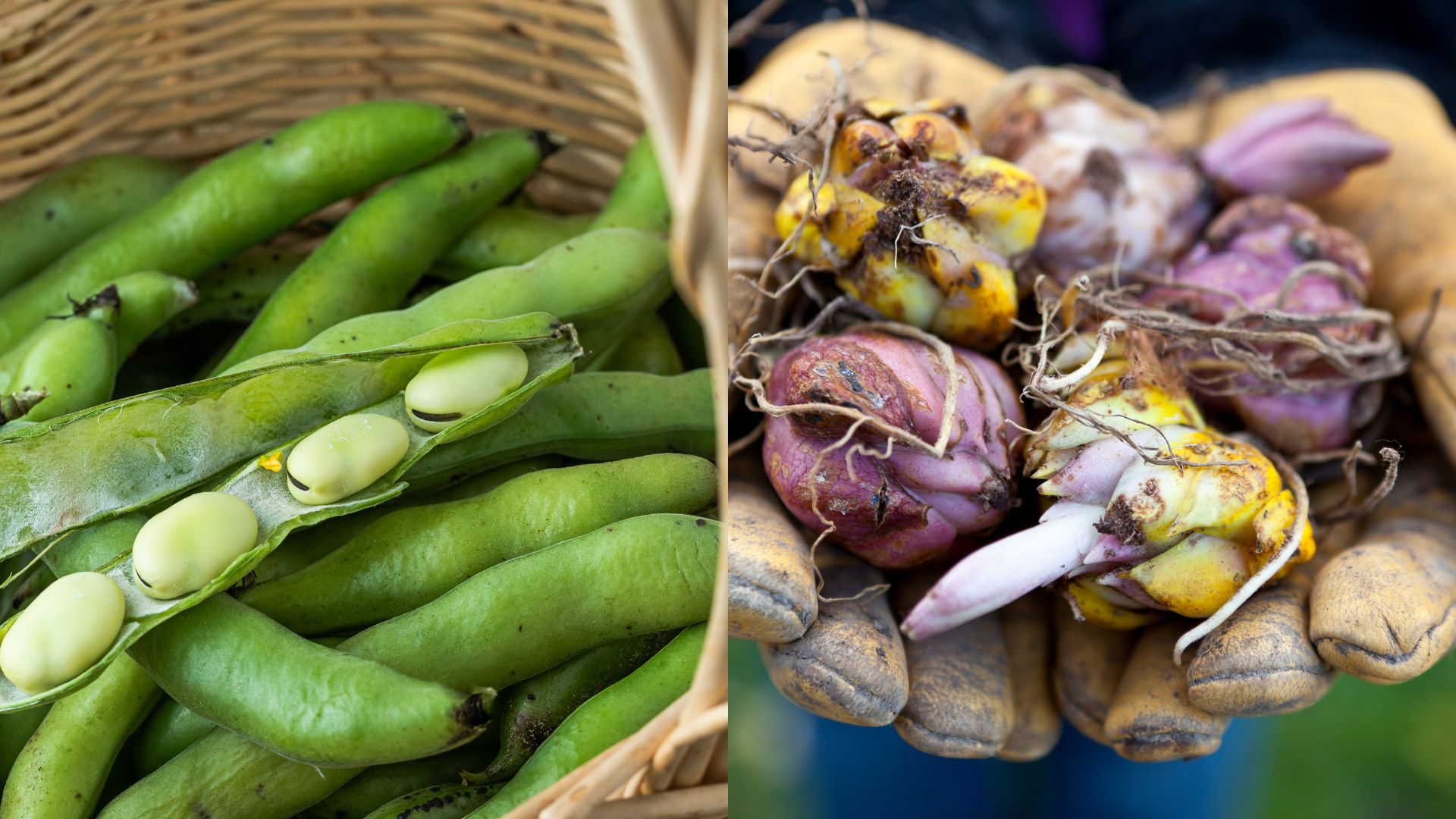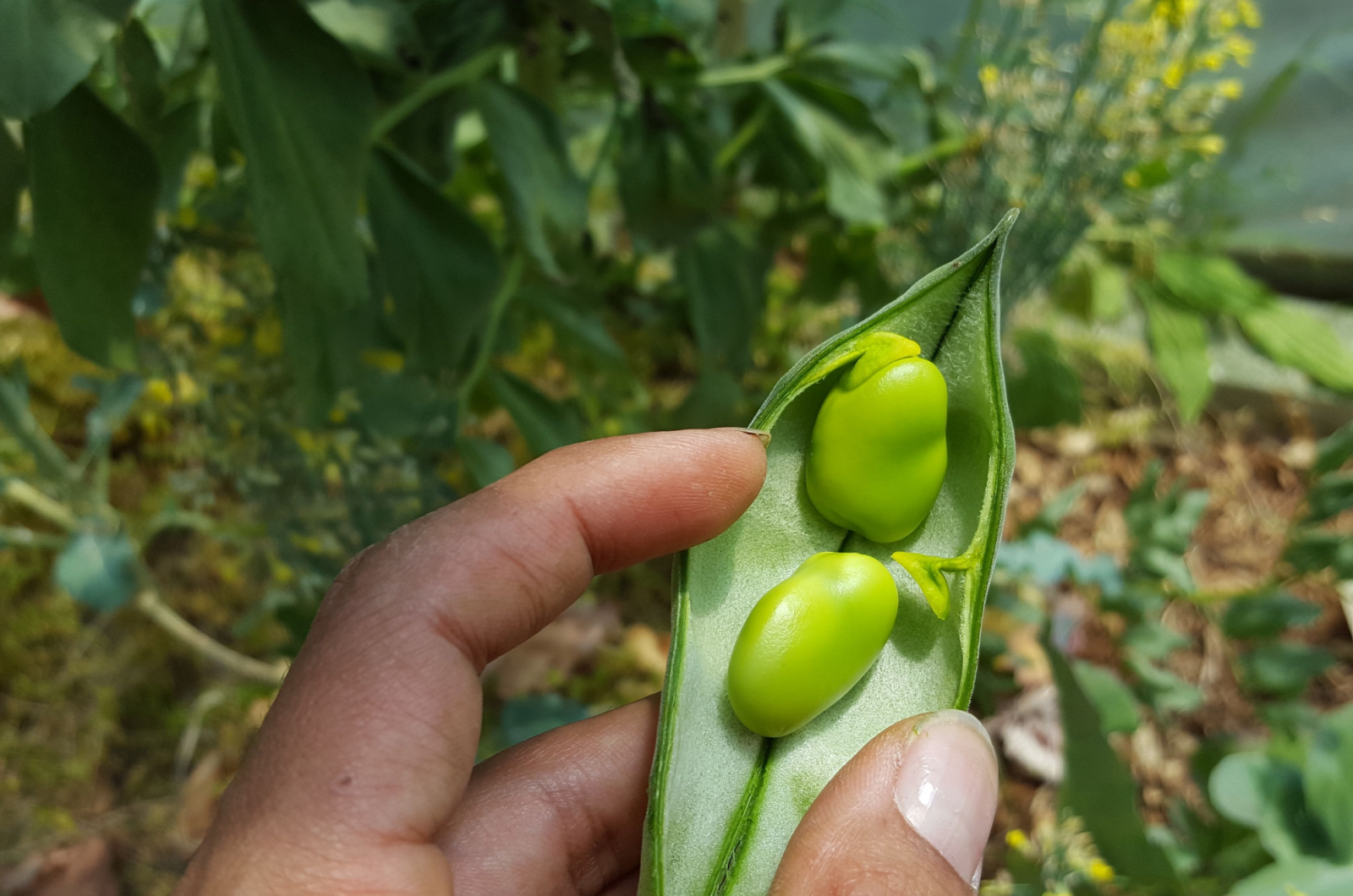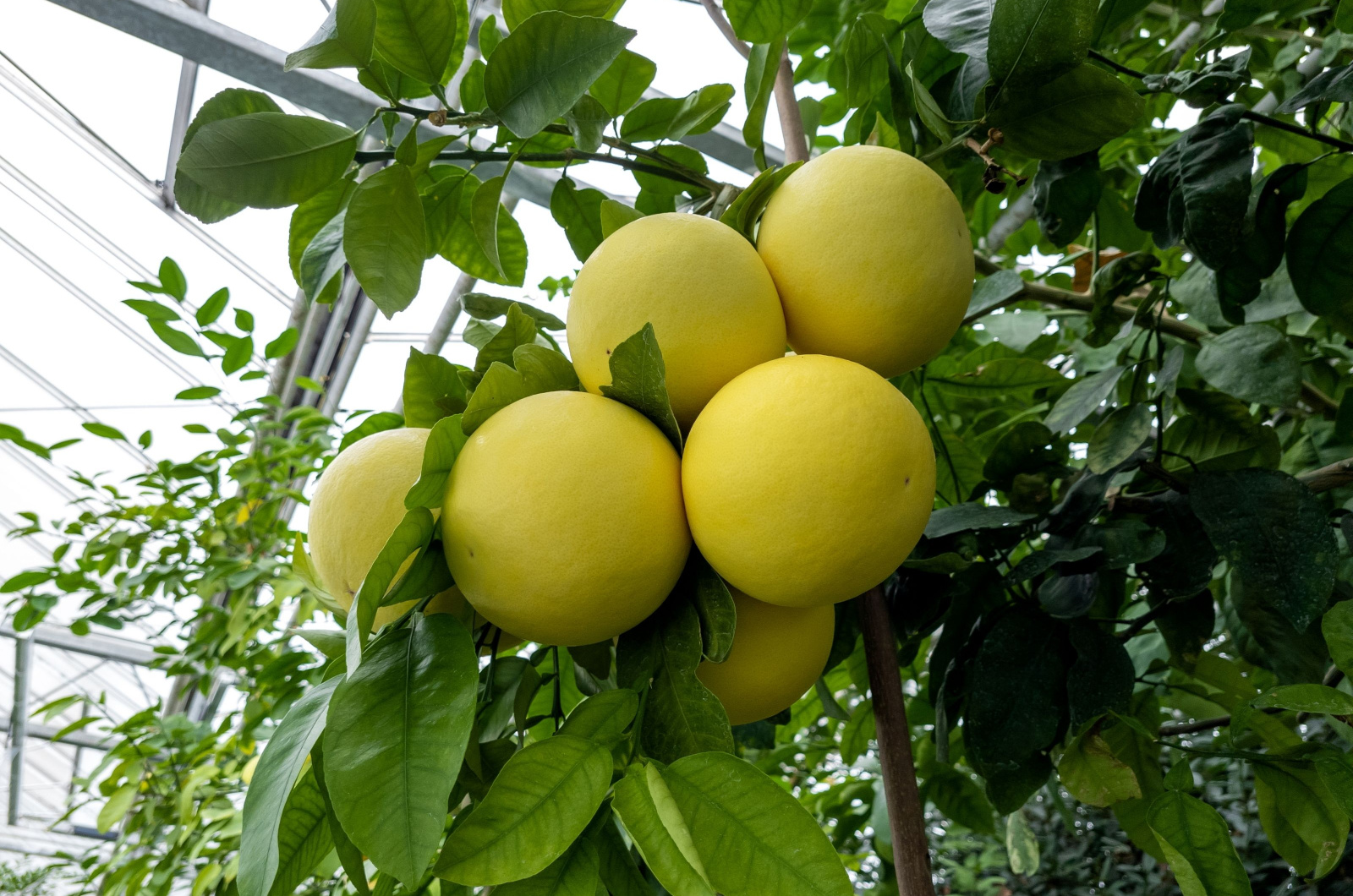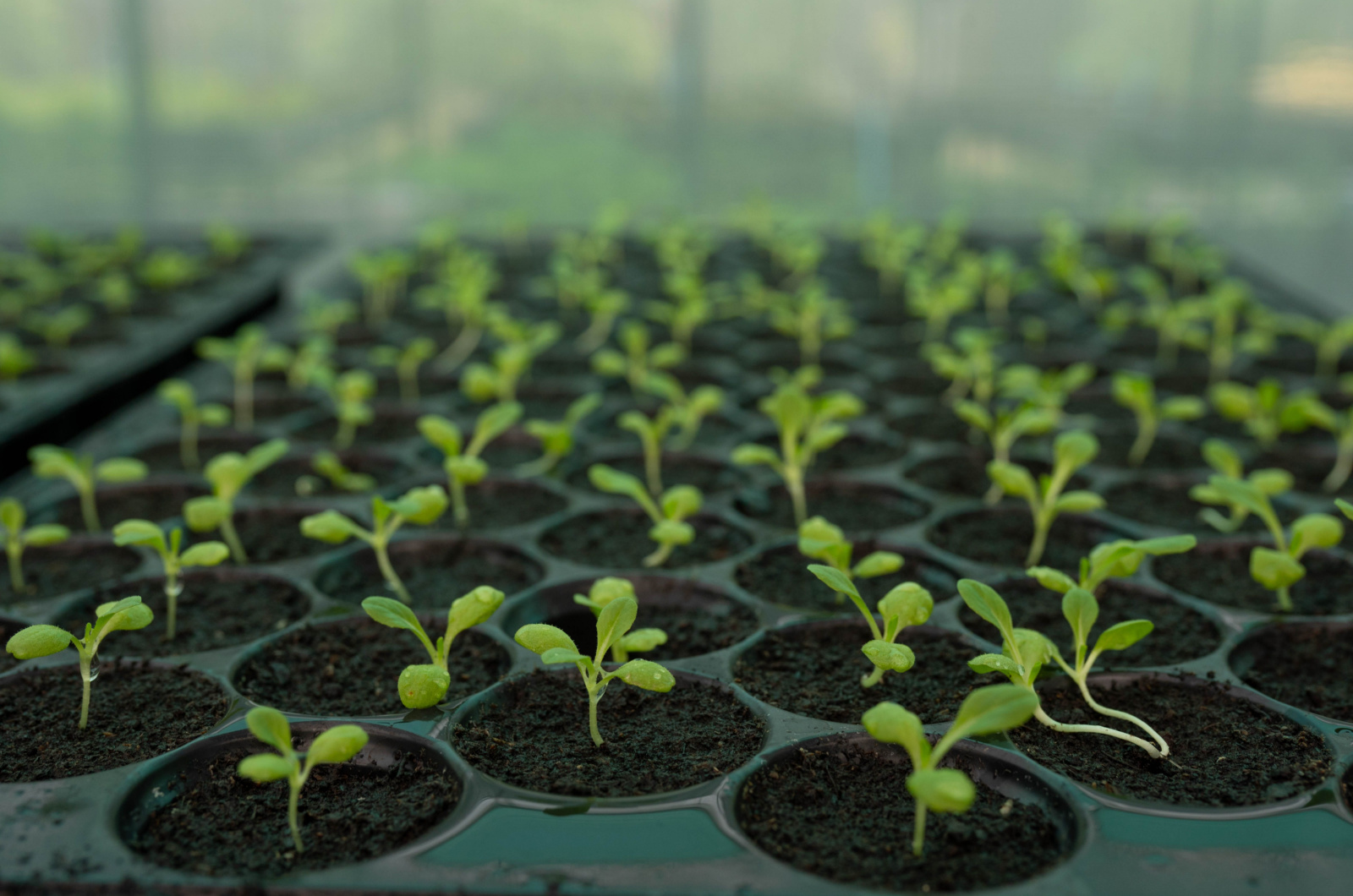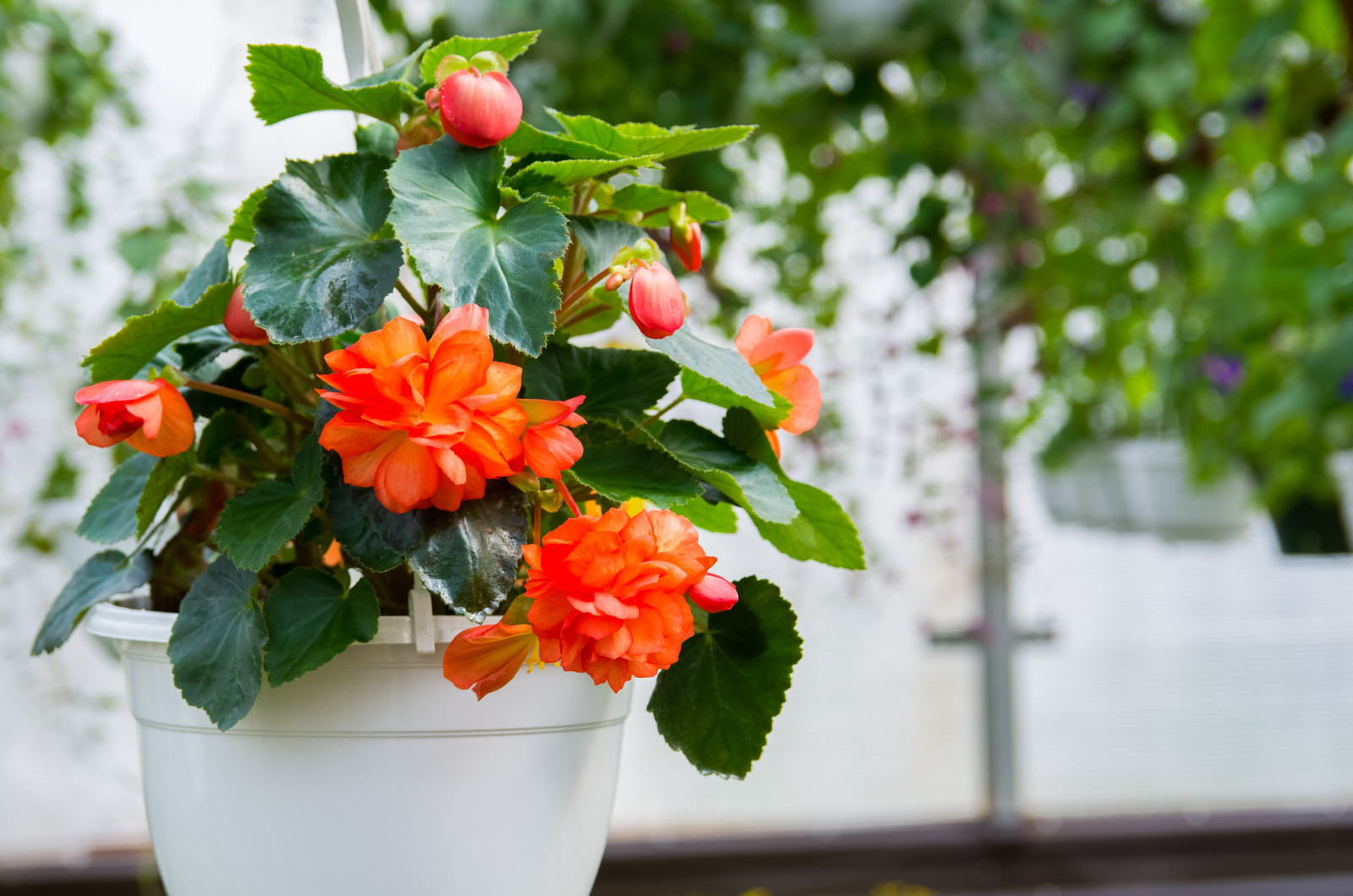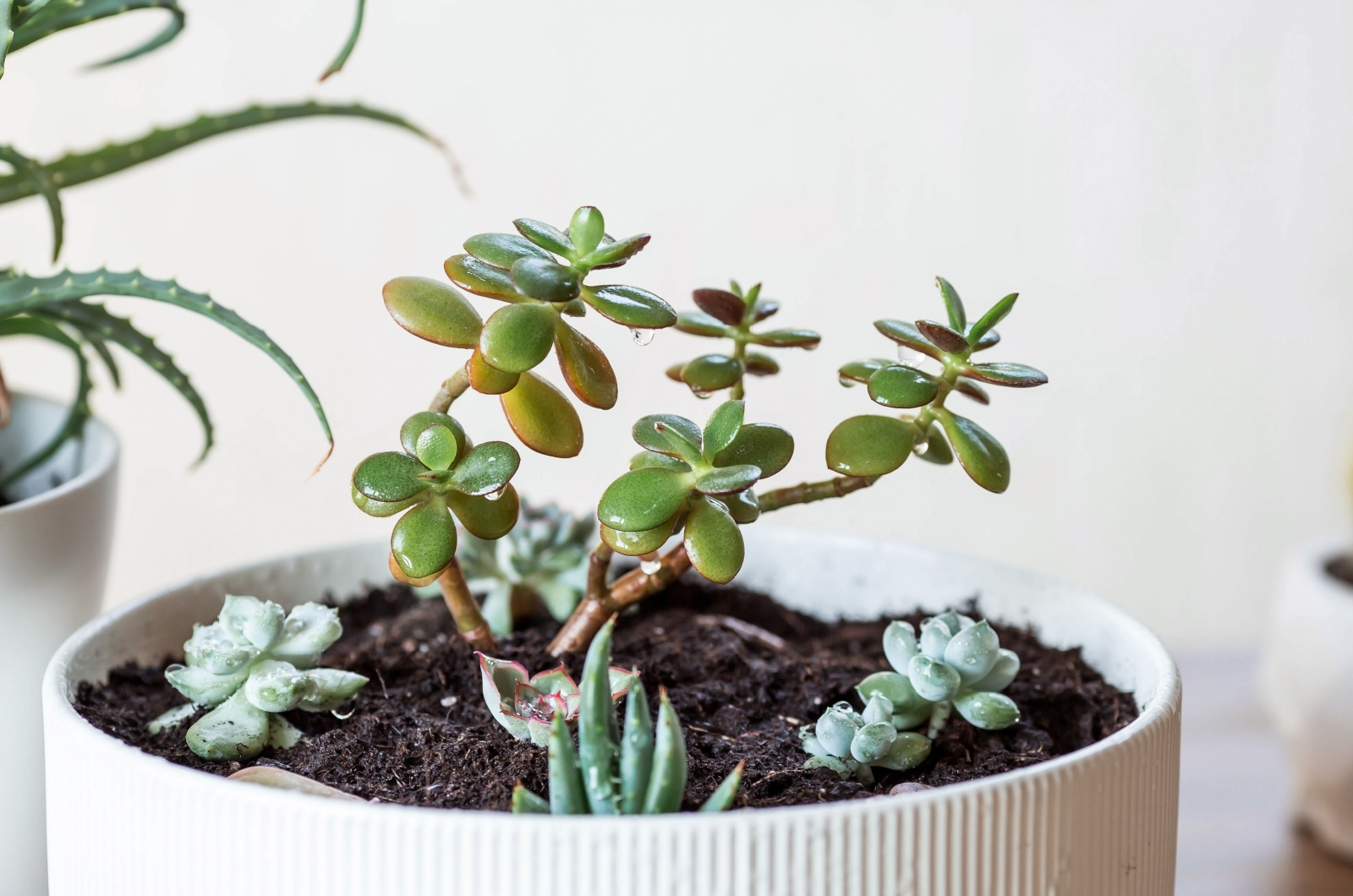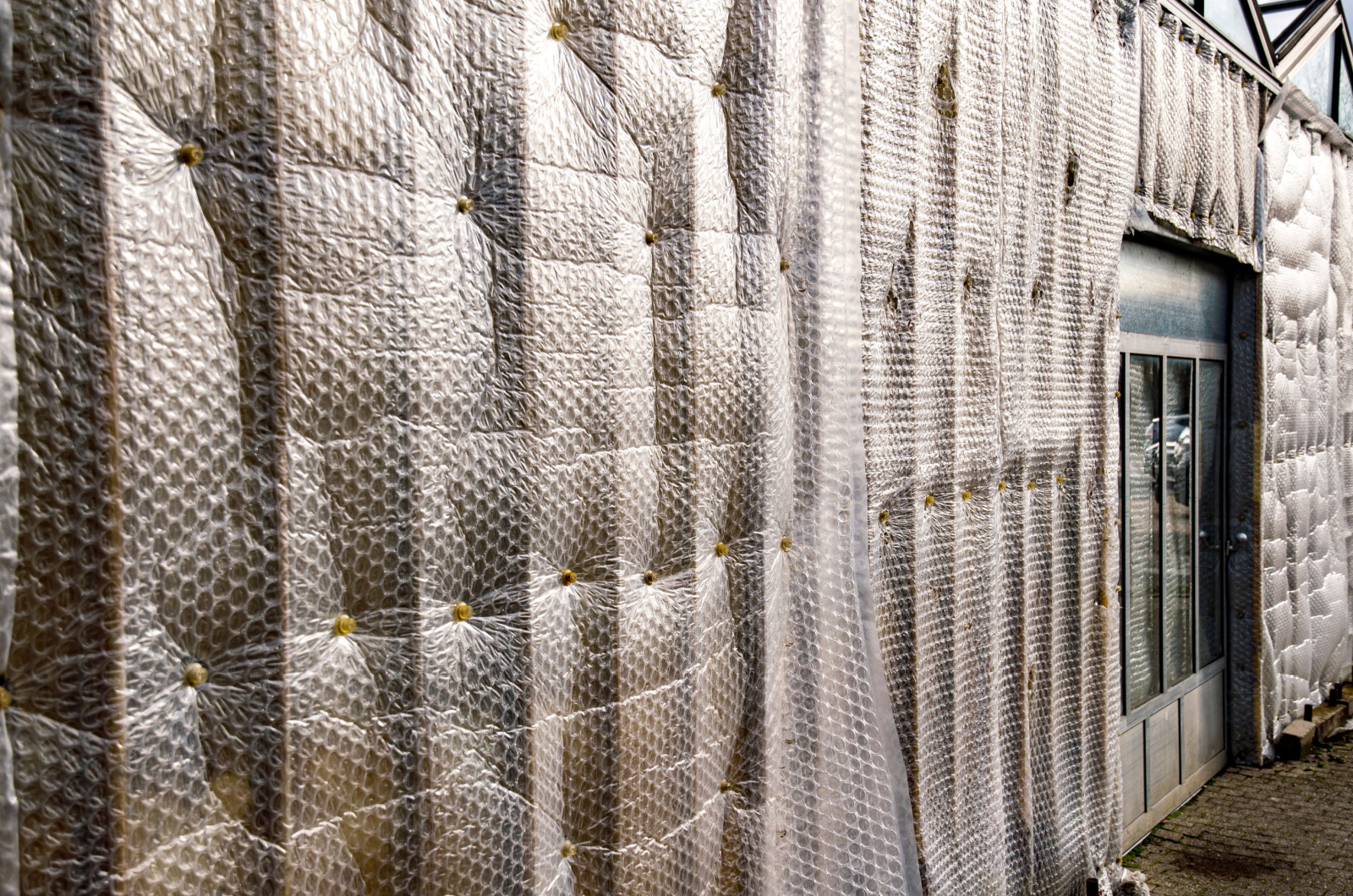A winter greenhouse is one of the most useful pieces of equipment a gardener can own. If you have one, you can do pretty much anything, including starting seeds to overwinter and protecting your perennials.
A greenhouse gives you enough space and warmth for your garden projects that you simply can’t do inside your home or garage.
Here are some things you can do in your greenhouse this winter to jumpstart the following growing season.
Let’s get started!
#1 Growing Winter Salads And Herbs
I don’t know about you, but one thing I miss most in winter is the ability to eat fresh salads whenever I feel like it.
Luckily, I found a way to combat this issue – growing winter salads and herbs in a greenhouse.
Sow your favorite greens and herbs in grow bags or individual pots and don’t overcrowd them if you want optimal results. You can also thin them afterwards!
Spring onions, cabbage, spinach, parsley, arugula, and lettuce are my go-to winter greenhouse plants, but you can plant any cold weather greens for winter gardens you like.
#2 Sowing Fava Beans
Beans generally don’t do well in frost and cold, but fava beans are more resilient than other varieties and you can start them in your winter greenhouse.
Plant a single bean per pot, use well-drained and fertile potting mix, and keep them watered. Once the weather begins to warm up and you harden the seedlings off, you can transplant them to a well-draining, nutrient-rich, and sunny spot in your garden.
Starting fava beans this way will give you an earlier harvest and extend your growing season.
#3 Storing Tender Plants
A greenhouse is the perfect place for saving your geraniums in fall or any other tender perennial. It will have some extra frost and wind protection.
Dig these plants up before the first fall frost, place them in planters filled with high quality potting medium, water them thoroughly, and put them in your greenhouse.
Put them on shelves to save some space and ensure their leaves don’t touch to get more air circulation.
Greenhouses are generally humid, so leaving some space between plants will reduce the risk of fungal diseases. It will also make it more difficult for pests to transfer from one plant onto the other if one is infested.
#4 Protecting Citrus Trees
If you don’t live in Florida, Georgia, or some other warm state, chances are you’ll have to take your citrus trees indoors.
These trees don’t like the frost or cold, which is why you should grow them in containers and move them to your greenhouse before any real danger appears.
Some important things to know before bringing citrus trees indoors are placing them in a planter large enough to support their growth, fertilizing them, and trying to mimic their natural environment as best as possible.
If you don’t heat your greenhouse, cover the trees with straw and a frost protective cover. Irrigate your citrus trees once the soil dries out a bit.
#5 Propagating Cuttings
My favorite thing to do in a greenhouse is propagate cuttings. This is my insurance policy if something happens to my plants.
Simply plant the cuttings in moist and well-drained seed-starting mix, water them to prevent them from drying up, and cover them with fleece if you’re not heating the greenhouse.
In spring, you can repot your cuttings in larger containers with a regular potting mix and plant them in the ground once they’re strong enough (either in late spring or early summer).
#6 Starting Hardy Seeds
One of the top tips for greenhouse beginners is starting seeds in greenhouses. Whether we’re talking about coneflowers and pot marigolds or your favorite vegetables, you can jumpstart your growing season by sowing the seeds indoors.
This will bring that summer color to your garden sooner and you’ll get the first pepper and tomato harvest a lot sooner than your neighbors.
All you have to do is sow the seeds in nursery trays filled with a moist seed-starting mix, lightly cover them with more growing medium, and place a humidity dome or plastic bag over them.
Spray them with water if the soil dries out and remove the dome or bag once the seeds germinate and grow into seedlings.
Once they become too large for the nursery tray, plant them in individual containers and harden them off once the weather warms up before transplanting them outdoors.
#7 Planting Lily Bulbs
I love lilies as much as the next person, and I’ve found a way to bring their amazing shades to your summer garden a bit sooner.
Start their bulbs in late winter or early spring in your greenhouse and they will flower much earlier than the lilies you plant directly in the ground.
Plant the bulbs in a pot three times deeper than their size and space them around two inches apart. Use a potting mix with excellent drainage or mix a regular one with pumice, perlite, or other draining materials.
If your growing medium doesn’t contain added plant food, you can mix in some worm castings.
And once all danger of frost is gone, you can move these pots outside to a shaded area.
#8 Overwintering Bulbs, Corms, And Tubers
You can overwinter your begonias as entire plants or save their tuberous roots in a greenhouse. Other bulbs, corms, and tubers that generally don’t do well in winter soil include dahlias, gladioli, freesias, and canna lilies.
Wait until the frost kills the aboveground growth and then dig these tubers up. Then, place them in dry and sandy soil (or wrap them in a burlap) and keep them in a cool greenhouse.
And if you’re growing these tuberous plants in pots, simply prune them to about 4 inches above the planter and take the entire container into your greenhouse. Never remove the entire growth because that’s where the plant will produce new shoots from.
In spring, lift up the tubers and plant them in new pots filled with fresh growing medium or plant them into your garden once the weather warms up.
#9 Restarting Tender Tubers
A greenhouse is an excellent place for starting tubers, such as dahlias and canna lilies, anew in March and April. Your greenhouse will be warm enough at this time without having to heat it yourself.
Use healthy tubers and get rid of the soft and rotting ones. Plant them in containers filled with a seed-starting mix and keep the soil moist but never wet.
Once they start to protrude from the soil and produce stems, you can take a couple to use as cuttings and grow the rest of them.
#10 Creating Succulent Planters
Succulents and cactus plants are perfect for beginner growers because they don’t require too much maintenance and look stunning with very little care.
And you can use them for a fun winter task – creating succulent plants. Use succulents with yellow flowers for a monochromatic appeal or go with colorful plants for more allure.
Plant them in a large planter filled with succulent soil mix and combine those plants with similar growing conditions so that they can all thrive. Use plants of similar sizes so that one plant doesn’t overcrowd the other, and that’s it.
Succulents such as lithops, hen and chicks, aloes, and sedums are perfect for this job. Start them in your greenhouse and move them outdoors once the weather warms up.
Heating A Greenhouse
One of the things I wish I knew before I got a greenhouse were the temperature conditions inside it. It can get quite warm in a greenhouse, although winters can still be tough.
That’s why it’s best to buy a heater for your greenhouse if your region experiences particularly harsh winters and you want to grow seeds and cuttings.
You should also invest in a thermostat, which will tell you the exact temperature and allow you to avoid freezing your plants to death.
Insulating A Greenhouse
You can consult this list of the 5 best greenhouses if you want everything ready-made or you can do some jobs yourself, such as insulation.
The best way to do this is to fasten some bubble wrap on the interior structure. Large rolls of bubble wrap and clips to secure it are widely available online and in hardware stores.
And when spring comes, remove this setup since your plants won’t need as much protection.
You can also use fleece to wrap your plants in, although this method doesn’t work against the harshest of winters and is best for regions with milder winter temperatures.
Just remember to remove it as the weather warms up because it can reduce air circulation and increase humidity around your plants, causing them to get fungal diseases or start rotting.
Using Mini-Greenhouses In Winter
Mini-greenhouses are perfectly usable in winter, especially for starting hardy seeds, overwintering perennials, or propagating cuttings.
Close them up as the temperatures plunge and cover them with warm blankets to raise the temperature within and your plants should be fine.
And once warm weather arrives, unzip your mini-greenhouse to introduce more air circulation and prevent fungal diseases and rotting.
P.S. Don’t forget to fasten your mini-greenhouse to the ground, wall, or a fence so that the winds and storms don’t blow it away.
Now you know everything you need to know about using a greenhouse in winter. I’ll just say one last thing.
Your plants still need light and air even when grown in greenhouses, so make sure to ventilate it properly and clean the glass regularly. Close your greenhouse before nightfall to keep the warmth in and pests out!

